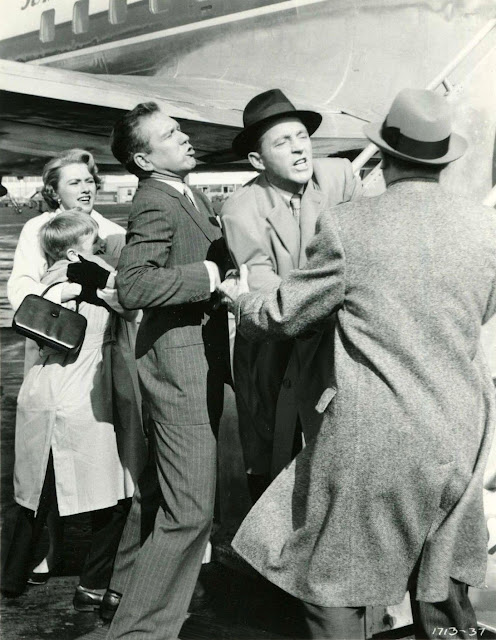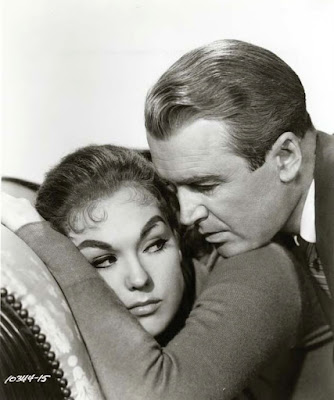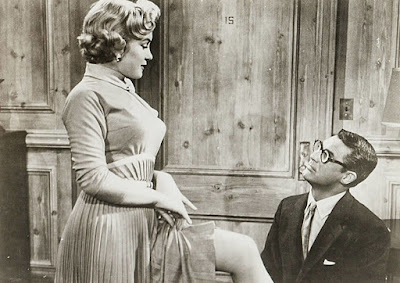Singing Out, Drama In, For Bing
Man On Fire (1957) Puts Crosby With Family Problems
Another dramatic lead for Bing Crosby, only this time no singing beyond a title tune during credits. He's a divorced dad intent on keeping a son his former wife wants back. Man On Fire was cheaply made at Metro (one million the negative cost, real economy for the Lion by 1957), though it was less their picture than
Crosby's "Earl Carleton" is bitter from a start over divorce having took place two years previous, and offscreen, so what we get is "after" character, no glimpse of who Earl was before the wife took off with another man. This leaves sour disposition unrelieved,
Major point of interest in Man On Fire is














































